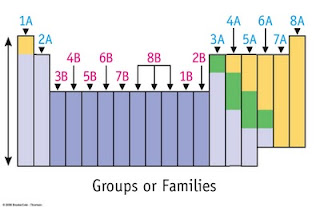Matter occupies space and has mass. It includes solid, liquids and gases of the environment as well as those in the bodies of all forms of life. Mass is the amount of matter in an object. Matter is composed of elements; chemical reactions cannot break down into simpler units. O is symbol for element oxygen, H is symbol for hydrogen, and Na is symbol for sodium. Recently scientists recognise 92 elements occurring in nature. Fifteen elements are found in large quantity in most animals and four of these (carbon, hydrogen, oxygen and nitrogen) account for the majority (97%) of animals’ body weight. Remaining 3% of animals’ weight consists primarily of calcium, phosphorus and potassium. Elements present in trace amount include sodium, sulphur, manganese, magnesium, copper, iodine, iron and chlorine. Elements are composed of units of matter called atoms. Atom is smallest part of an element that can enter into chemical reaction. Atoms vary in size, weight and the diverse ways they interact with each other. For example some atoms can combine with atoms like themselves or with dissimilar atoms, others lack this ability.
Structure of Atom: Atoms have two main parts, a central core called a nucleus and the surrounding electron cloud. Nucleus contains two major particles, positively charged protons (P+) and uncharged neutrons (n). Surrounding the nucleus are negatively charged particles called electrons (e-). Any one electron moves so rapidly around the nucleus that it cannot be found at any given point at any particular movement in time. Therefore its location is given as an electron cloud. Because the number of negatively charged electrons outside the nucleus is equal to the number of positively charged protons, the atom is electrically uncharged or neutral.
Atomic number: The number of protons and neutron in the nucleus and the number and arrangement of electrons in the electron cloud determine an atoms’ chemical and physical properties. The atomic number of an element is the number of protons in the nucleus of one of its atoms. Elements are identified by their atomic number. For example, if an atom has one proton, it is hydrogen; if it has six it is carbon; if it has seven, it is nitrogen and if an atom has eight protons it is oxygen.
Valence: Another measure of an atom is its valance. The valance is the number of bonds an atom will usually form equal to the number of electrons required to complete the outermost that is the valence electron shall.
Atomic mass: Another measure of an atom is its atomic mass. Atomic mass is equal the number of neutrons and protons in the atoms nucleus. Because carbon contains six protons and six neutrons, its atomic mass is 12 and is symbolized with a super script preceding the elements. Symbol 12C and is read as “Carbon – 12”.
Isotopes: All atoms of given element have same number of protons in the nucleus but some have different number of neutrons and thus different atomic masses. These different form with the same atomic number but different atomic masses are isotopes. Most common form of carbon atom has six protons and six neutrons in the nucleus and atomic mass of 12 (12C). A carbon isotope with six protons and seven neutrons has atomic mass of 12 (12C) while carbon isotope with six protons and eight neutrons has atomic mass of 14(14C). Some isotopes like 12C and 13C are stable and do not break down. Other isotopes like 14C are unstable and tend to break down, decay or decompose by periodically emitting small particles and energy. These unstable isotopes are named as radio isotopes or radio active isotopes. Hydrogen has three isotopic forms, each isotope has one proton in each nuclear but have no, one or two neutrons. Hydrogen with no neutron is denoted by 1H; Hydrogen with two neutrons is deuterium and represented by 3H and is radio isotope. Oxygen, iron, cobalt, iodine and phosphorus are examples of elements that have radio active isotopes.
Energy level shells: Electrons of an atom are distributed around its nucleus in orbital called energy level shells or clouds of electrons and are numbered as K, L, M, N. Seven Energy level shells are possible. Each shell can hold only certain number of electrons. The shell nearest to nucleus never has more than two electrons. Second and third shells can each have not more than 8 electrons. Larger number fills the more distant shells. When the shell of an atom holds the maximum number of electrons possible, the shell is complete and stable.







0 Comments